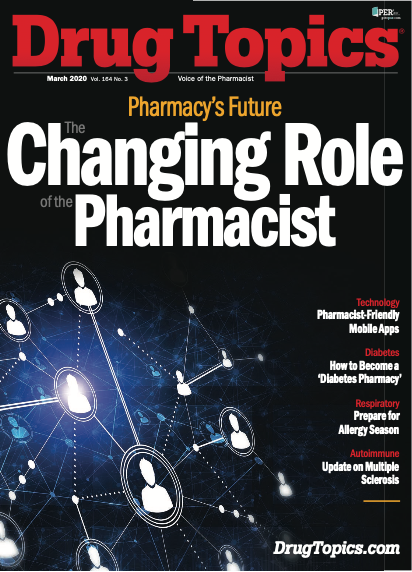Going Beyond Dispensing: The Future of Pharmacist Roles
Walk into a pharmacy in 2030 and there’s a good chance you’ll see a pharmacist. And there’s a good chance the pharmacist will have little or nothing to do with dispensing.

Lucinda Maine
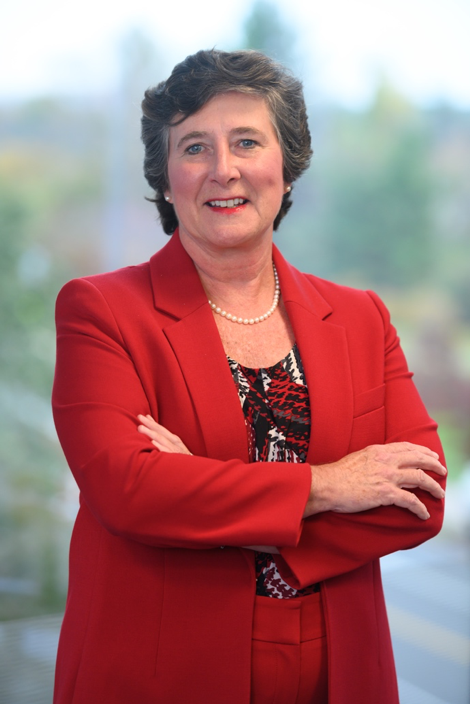
Kurt Proctor
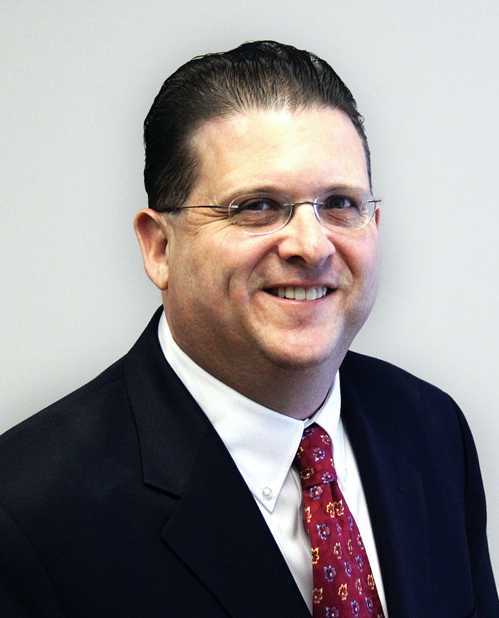
Jennifer Zilka
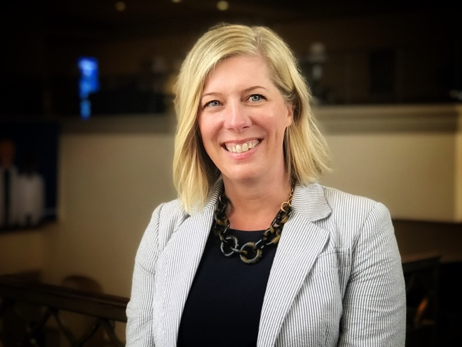
Anne Burns

Calvin Knowlton

Becky Winslow
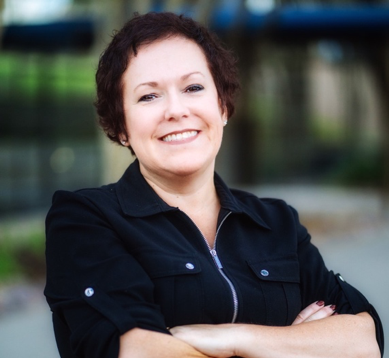
Walk into a pharmacy in 2030 and there’s a good chance you’ll see a pharmacist. And there’s a good chance the pharmacist will have little or nothing to do with dispensing. “We will have less to do in the future with actual medications,” predicted Michael Rea, PharmD, founder and chief executive officer of Rx Savings Solutions, a medication therapy management firm in Kansas City. “Pharmacists might still be responsible for dispensing, but they won’t be counting by fives and maybe not looking at pill vials. Automation, robots, software can probably do the job faster and more accurately when it comes to dispensing. Pharmacists will be adding value and improving health outcomes in other ways.”
State practice acts still make pharmacists responsible for safe and accurate dispensing, but economics are squeezing pharmacists out of the process.
Amazon bought PillPack in 2018 and is seeking pharmacy trademarks in more than a dozen countries. The company also advised patients in 2019 that it would be adding Amazon Pharmacy to packaging.
However, Amazon isn’t alone in squeezing prescription profit margins. Other e-pharmacy startups are also offering fast, low-cost delivery of Rx medications as payers and pharmacy benefit managers (PBMs) continue to trim already-low product reimbursement and pharmacy profit margins.
“Dispensing is dying,” said Becky Winslow, PharmD, senior pharmacogenomics specialist, Medical Affairs, Admera Health. “I was a pharmacy manager for Walmart 21 years ago and started plotting my way out within 2 years. I could see the business model just wasn’t sustainable.”
Changing Business Models
Traditional dispensing will be even less sustainable in 2030, Rea predicted. Independent pharmacies have long offered home delivery. Facing increasing pressure from Amazon and other on- line sellers as well as independents, CVS, Walgreens, and other chains are rolling out their own delivery programs.
But growing home delivery means shrinking foot traffic, Rea noted. That means lower retail prescription volume and lower non-Rx sales on a per-store basis. Major chains have been closing lower performing stores for years, increasing pressure on pharmacist employment.
On the flip side, patients, like other consumers, want convenience. That means more care at home, at work, and in community locations.
“Pharmacy has the potential to be one of the points of access,” said Lucinda Maine, PhD, RPh, executive vice president and chief executive officer of the American Association of Colleges of Pharmacy.
Pharmacists continue to be the most trusted and most accessible health care providers. Patients visit a pharmacy an average of 35 times per year compared with just 4 visits to see medical providers, according to Jennifer Zilka, group vice president of Good Neighbor Pharmacy Field Programs and Services. New business models play to those 2 strengths. “We are seeing a move from financial models based on volume to models that are clinically focused on quality, keeping people healthy and out of the hospital,” Zilka said. “The goal is better clinical outcomes and pharmacists are poised to play an important role on the health care team to improve outcomes.” Focus on outcomes is already a reality in health system settings, she continued. Most systems currently have pharmacists on the floors monitoring interactions, evaluating therapy, adjusting medications, and working with the rest of the health care team to optimize outcomes. Retail pharmacists have an opportunity to play a similar role in the community.
“I see more point-of-care testing in 2030 in community pharmacy and prescribing on the spot,” she predicted. “More immunizations, more compounding. The next 10 years is transforming practice from dispensing a product to providing a flexible, high-touch, personalized service experience with better clinical outcomes.”
Reimbursement is in flux. Payment from public and private payers is mov- ing toward value-based, but fee-for-service still dominates some sectors, including pharmacy.
“Changing payment models are conducive to cobbling together the resources to support a pharmacist,” explained Anne Burns, RPh, vice president of professional affairs for the American Pharmacists Association. "Practices that have moved to value-based have the incentive to bring providers to the table who can impact their quality metrics and outcomes. There is an increasing appetite for the role that pharmacists can play. The evidence is building that pharmacists can contribute to outcomes.”
The key to pharmacy success in 2030 is focusing on the specialized knowledge and training of pharmacists. Every provider in health care has a niche. Physicians are trained to diagnose, nurses to support, and physical therapists to improve physical function. Pharmacists are the providers trained in medication science.
Not understanding the science of drug delivery, activity, and interactions is an important reason so many patients get the wrong drug at the wrong time, said Calvin Knowlton, PhD, founder, chair, and chief executive officer of health care informatics provider Tabula Rasa Healthcare. This is also 1 reason adverse drug events (ADEs) have become the third leading cause of death in the United States after heart disease and cancer.
“The most common therapeutic intervention in the world is pharmacotherapy,” Knowlton said. “For every dollar we spend on prescription medication, we spend more than another dollar trying to address problems caused by the medications. Pharmacists can change that, pharmacists are being paid to change that. Don’t worry about prescriptions- let Amazon or 1 of their competitors do it.”
Pharmacist or Pharmacy?
Patients typically fall into 1 of 2 categories, Zilka said. They need a familiar prescription refilled with no changes, no questions, no complications, and no worries. They need a channel to get their medication as conveniently and as cheaply as possible. They need a pharmacy.
Or, they need personal attention due to a new prescription that requires counseling or multiple medications with the potential for interactions and ADEs. They need someone who can walk them through the quirks of 3 different asthma inhalers, someone who help them afford their medications, and someone who understands the underlying science of all of the factors that play into drug activity. They need a pharmacist.
“Payers are realizing that when pharmacists are involved with patients, they can have a significant impact on lowering the total cost of care,” said Kurt Proctor, PhD, RPh, senior vice president of strategic initiatives for the National Community Pharmacists Association (NCPA) and president of the NCPA Innovation Center. “Increasingly, payers are going to want to work with pharmacists and pharmacies that are achieving good patient outcomes.”
Dispensing won’t go away, Proctor predicted, but pharmacies that can demonstrate improved outcomes will earn the privilege of dispensing as well as providing services. And patients will be incentivized to use specific pharmacies that show positive results.
Look for technology to update familiar processes such as drug utilization review (DUR). The basic DUR technology is nearly 50 years old and scans for interactions between 2 agents. That’s a problem when approximately half of older adults are taking 5 or more medications.
One-to-one DUR embedded in electronic health records, pharmacies, PBMs, and other systems is archaic, Knowlton said.
Tabula Rasa is currently testing MedWise, a simultaneous, multi-drug DUR incorporating pharmacodynamics, pharmacokinetics, pharmacogenomics, and chronopharmacology in multiple Part D populations. Clinical pharmacists provide personalized follow-up with patients and prescribers with specific recommendations for deprescribing, substitutions, and timing changes to improve outcomes.
In 6 months, medication use decreased about 27%, hospitalizations by 43%, and emergency room visits by 20%. Per patient per year savings were approximately $4,000 and the total return on investment was 13:1.
Science and reimbursement are the only limits on pharmacist roles in 2030, Proctor said. As pharmacotherapeutic science advances, so do potential niches for pharmacists.
“We are already seeing point-of-care testing,” Maine said. “Pharmacogenomic analyses are beginning to be applied to drug selection and dosing. There is going to be a lot more health information technology that impacts diagnosis, therapeutic, and patient management. Pharmacists can help solve our medication problems-if we let them.”
Looking Ahead at Pharmacogenomics, Nutrigenomics
Pharmacogenomics and nutrigenomics are early contenders for the hottest new area in pharmacy. Neither is board-certified, but the American Society of Health-System Pharmacists launched its first pharmacogenomics certificate program in 2018.
“Pharmacists need to take a very involved pharmacogenomics role with both patients and providers,” said Jaclyn Boyle, PharmD, MS, PhD, associate professor of pharmacy practice at Northeast Ohio Medical University. “Once we know how a variant in an individual’s genome affects the way they can process a particular medication, there are many implications for the selection, effectiveness, and safety of therapies and interactions. Pharmacogenomics data can help inform decision about whether a patient should try a medication, stay on it, whether a given med is going to either positively or negatively impact the patient.”
Boyle is chief executive officer of Synerji, a startup turning pharmacogenomics and nutrigenomics into everyday tools for pharmacists.
Think clopidogrel. “Plavix (clopidogrel, Bristol-Myers Squibb) helped put pharmacogenomics on the map,” said Winslow. “But the bulk of pharmacogenomics research is in oncology, psychiatry and most recently, pain. Only about 50% of women who are getting chemotherapy for breast cancer can even benefit. They don’t need chemotherapy, they need hormone receptor medications, but only genetic testing can show that. Medication selection and counseling based on genomic data is a huge unmet need.”
Winslow founded inGENEious RX to commercialize pharmacogenomics. As the list of cardiovascular, oncology, and other specialty medications with known pharmacogenomic interactions grows, more and more payers are covering genomic testing. Self-insured employers are leading the way, she said, but commercial payers are starting to recognize the value of pharmacogenomic testing-and paying pharmacists to evaluate therapeutic choices based on pharmacogenomic data. Nutrigenomics is close behind.
“Nutrigenomics counseling could play a big role in disease states where nutrition plays a role, which is most of our chronic diseases,” Boyle said. “Nutrition impacts the development and progression of diabetes, cardiovascular disease, kidney disease, irritable bowel syndrome and other GI conditions, and so much more.”
Genetic variants can play a huge role in response to both medications and nutrition. Metformin, the most commonly prescribed agent for type 2 diabetes, depletes vitamin B12, Winslow noted. And some individuals are genetically disposed to process B12 poorly.
“We know that metformin depletes vitamin B12 and processing B12 poorly is a compounding factor,” she said. “Nutrigenomics data can help us spot that potential problem to improve the patient’s medication outcomes. Once we start showing improvements in outcomes, payers are negotiating reimbursement.”
